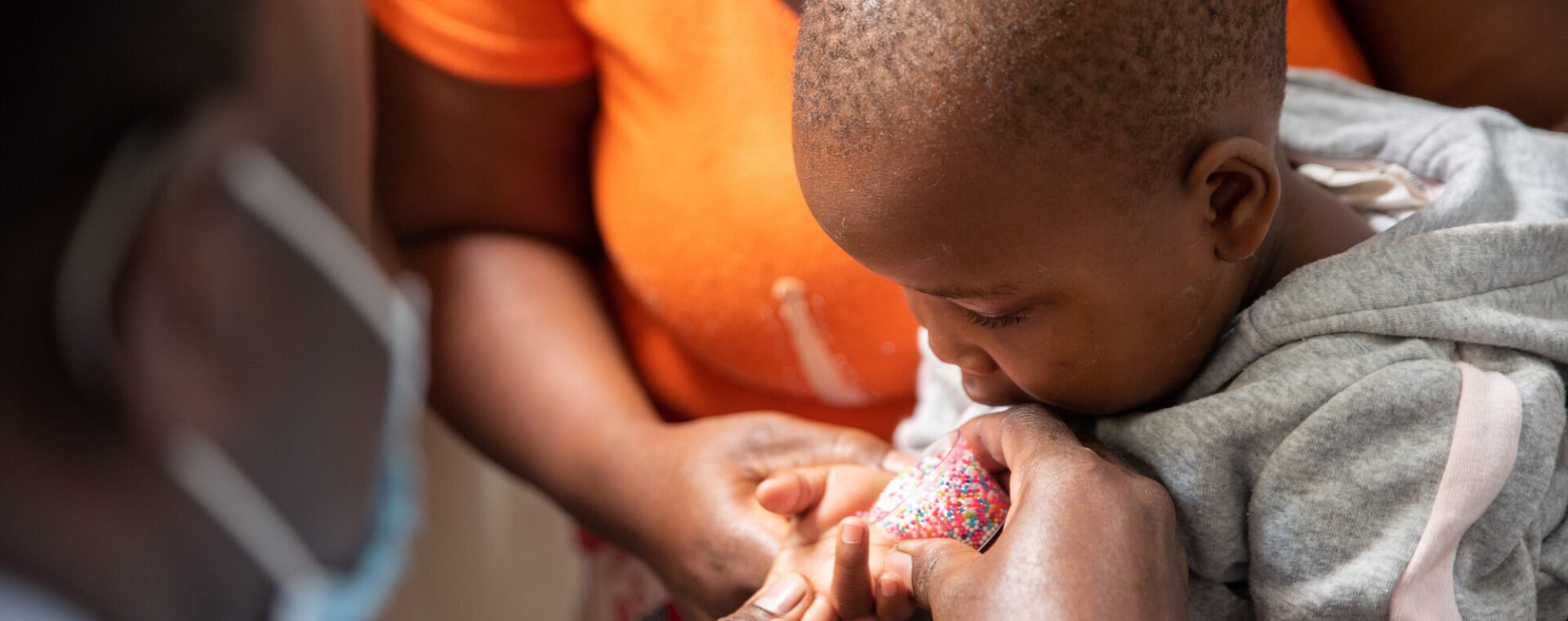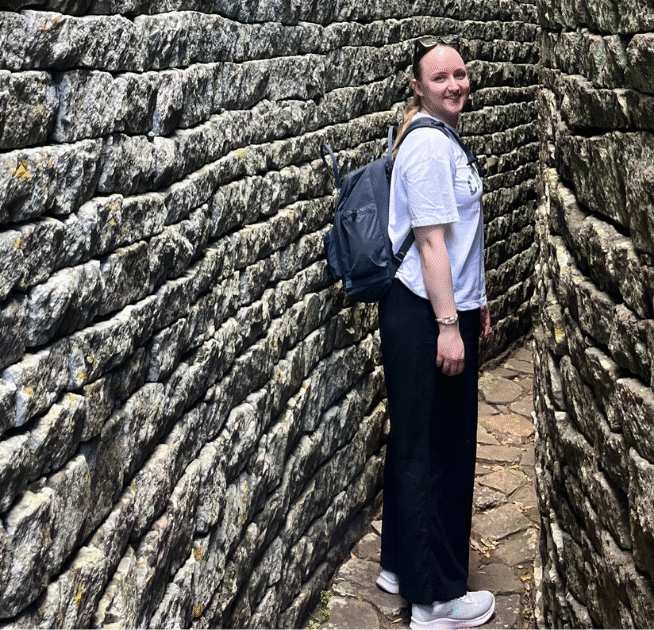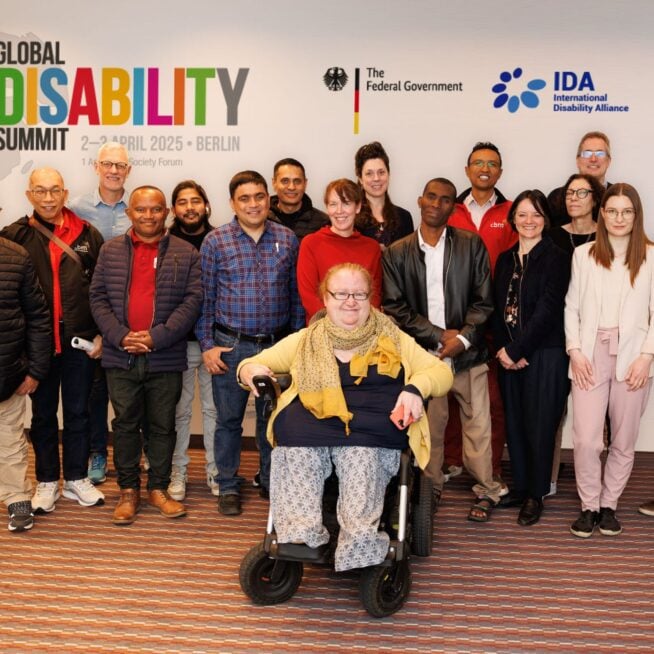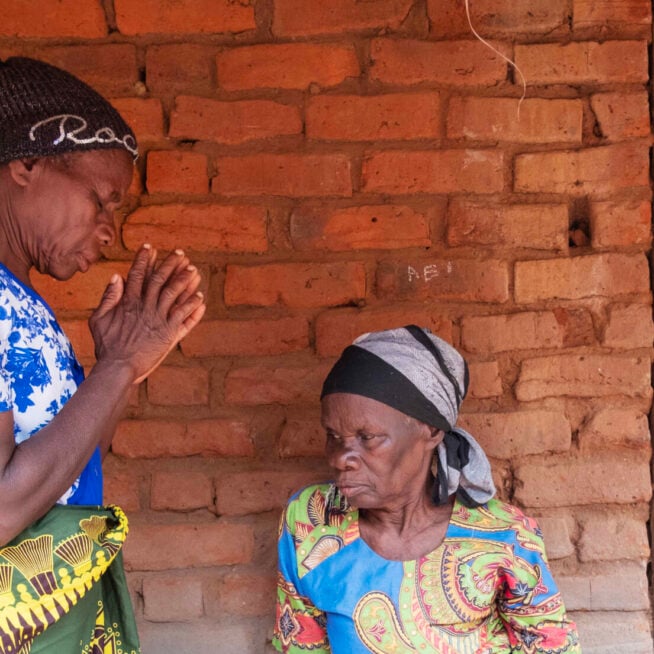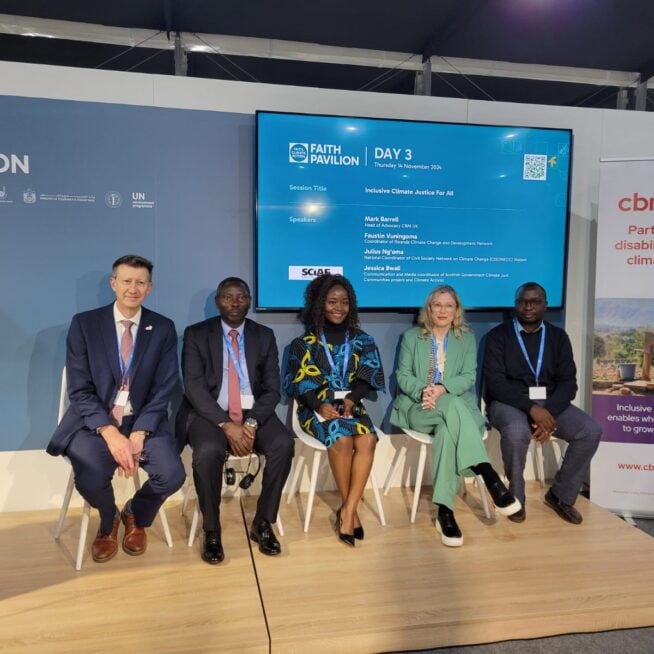Want to transform lives with us? Stay in touch and hear about our news, activities and appeals by email!
Treating the hardest to reach – reaching the final trachoma cases in Namutumba District, Uganda
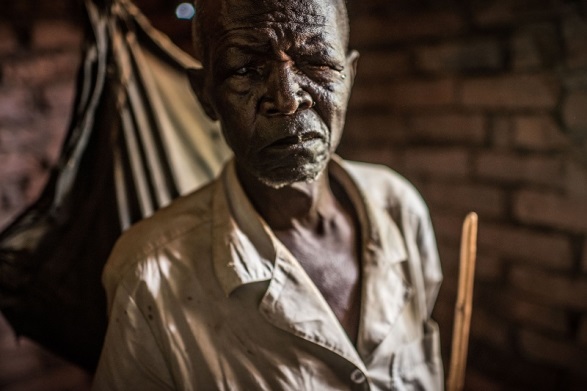
Rosi Jack, Communications Manager for CBM UK, reports back on a recent visit to Uganda, where she met the team reaching the last cases of people suffering from trachoma in their area.
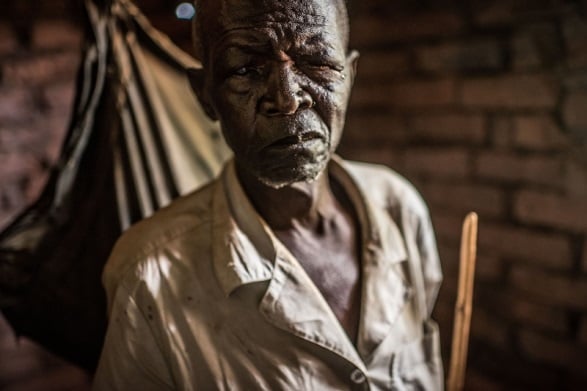
In Namutumba District, eastern Uganda, people no longer live with the threat of catching trachoma, a painful, blinding eye infection. Thanks to years of concerted action by the Ugandan health authorities, supported by The Queen Elizabeth Diamond Jubilee Trust (Jubilee Tribute Website – open in new tab) and members of the International Coalition for Trachoma Control (ICTC) like CBM, people are no longer at risk of catching the infection, which used to threaten children in particular, as it is highly contagious and easily passed between family members and friends.
“We don’t see examples of children with trachoma now”, explains James Murambwe, who has been part of the District Eye Health Team for ten years. “Now we only see old people with complications of trachoma in this district.”
The final challenge in Namutumba has been to reach the last people still living with the devastating long term consequences of repeated trachoma infection. People like Nasani, a grandfather in his 80s. Nasani has had sight problems because of trachoma since 2008. The effects forced him to retire early from his job as a teacher – trachoma causes the eyelashes to grow inwards so they rub against the cornea.
“The eyelashes were touching my eye”, he explains. “I was not able to see the blackboard or in the books.”
With his poor sight, constant pain and watering in his eyes, Nasani struggles to look after himself. Like most people in this rural area, he used to grow his own beans, maize and potatoes but now he relies on his grown-up daughters to look after him. This has had an impact on the whole family – Nasani’s daughter used to earn money buying fish at landing sites and selling it, but now there isn’t time as she needs to care for her father.
I met Nasani outside his two-room brick hut. Nearby, one of CBM’s Ugandan partner hospitals is running a three-day outreach camp, set up in a local health centre to treat patients like him, funded by The Queen Elizabeth Diamond Jubilee Trust. Patients suffering from the advanced effects of trachoma – known as trachoma trichiasis (TT) – can undergo a simple operation under local anaesthetic to flip their eyelid and stop their lashes scratching the eye. It cannot repair the scratching that has already occurred, but it does prevent it getting worse. And without the pain and watering, the patient is able to see again. Treatment is free and patients are collected from their homes and dropped back the same day.
But despite his current difficulties and the huge benefits of treatment, Nasani has been very reluctant to have surgery. Local Village Health Team volunteer Isabirye Mugulwa has visited regularly to explain to Nasani and his family that the surgery will relieve his pain and improve his sight and without it he will become completely blind.
“I tried to convince him several times. At first he refused. The main issue is fear. People think that after the operation their eyes will no longer be able to see. So I had to convince him, to give him examples of some of his neighbours, people he knows, who had the operation.”
Training and supporting Village Health Team volunteers, like Isabirye has been vital to tackling trachoma in Namutumba and other districts in Uganda. Volunteers work in their own communities to identify people with conditions like trachoma and inform them about treatment that is available. Crucially, they are also trusted by friends and neighbours, who help people overcome their fear of treatment. While most people would find the idea of eye surgery a bit daunting, in an area where most people will never have visited a hospital or had an operation, fear is a huge barrier, especially among people who are elderly.
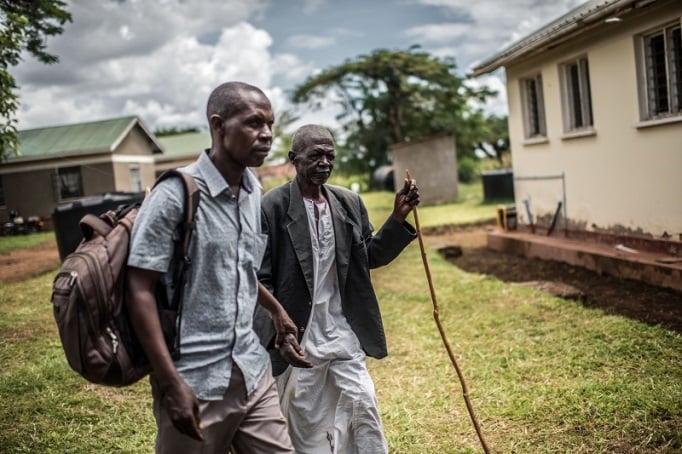
Village Health Team volunteers work closely with the District eye health team, like Ophthalmic Clinical Officer James Murambwe, referring all patients with eye problems to them for diagnosis and treatment.
James also regularly encounters patients who are reluctant to have surgery: “There is fear. Fear of surgery. That is the main problem. They sometimes misinterpret that when you are taken for surgery you might be left blind.”
James has met Nasani several times and is with us today to encourage him to come to the outreach clinic for treatment. After a final eye examination, Nasani agrees to come with us for surgery. James leads him to the waiting 4×4, which is used to collect patients with trachoma who need sight-saving surgery. There is no road to Nasani’s house, just a narrow, bumpy mud path, so a less rugged vehicle would have no hope of getting here.
Fortunately, project driver Edmund is used to such roads – and much worse. He has driven patients to and from outreach camps all over this region and in other parts of Uganda. There are few cars on local roads here, most people get around by walking or take a moped taxi from the nearest village. So transport to and from the outreach camp for surgery is vital to get patients – mostly elderly and all with low vision – to treatment.
A short while later, we arrive at Nsinze health centre, where a temporary operating theatre has been set up to carry out TT surgery. After a final eye examination and a general health check by nurse Janet, Nasani finally has the simple procedure he needs to stop his eye lashes scratching his cornea, putting an end to nearly ten years of pain and sight problems.
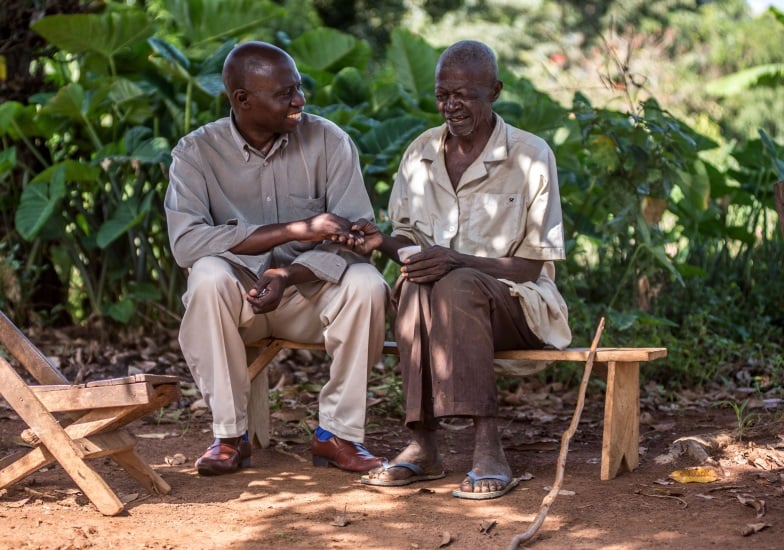 The next day, we return to Nasani’s house with Village Health Worker Isabirye, so that James can remove his bandages and check that the surgery has been successful. Nasani can’t see much today because of the antibiotic ointment that James uses to prevent infection, but the family gather round to express their gratitude.
The next day, we return to Nasani’s house with Village Health Worker Isabirye, so that James can remove his bandages and check that the surgery has been successful. Nasani can’t see much today because of the antibiotic ointment that James uses to prevent infection, but the family gather round to express their gratitude.
Nasani is hopeful that soon he will be able to see clearly and be able to look after himself, growing crops like maize and beans. Isabirye is delighted that Nasani has finally agreed to the operation and that life will be easier now for the whole family.
“I feel happy of course”, he explains. “They have been suffering a lot here. But now things will be better for them here because he can carry out his [household] duties.…Now he will be comfortable, now that he’s had the operation.”
Surgery to treat trachoma trichiasis takes less than 15 minutes. But for many patients, surgery marks the end of months of visits, gentle persuasion and reassurance by the Village Health and District Eye Health teams. But thanks to the concerted efforts of the team in Uganda and supporters who enable this work to happen– Nasani and others like him can now live free from pain, able to see more clearly, visit friends and neighbours and care for themselves again, and trachoma trichiasis has now been eliminated in this area of Uganda. It’s amazing what team-work can achieve.
All images © CBM/Trenchard. Top – Nasani at home. Middle – James Murambwe leads Nasani from the camp vehicle to the health centre for surgery. After the procedure, he will be able to see to move around independently. Bottom – Isabirye with Nasani at his home. The Village Health Team volunteer has worked closely with Nasani and his family to help him overcome his fear of surgery.
